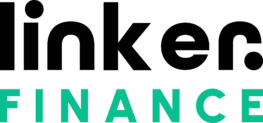Turning Small Talk into Big Opportunities
Front-line bankers are often the first — and most trusted — points of contact. Their everyday interactions naturally open doors to broader financial guidance. By staying attentive and approachable, tellers can turn routine service moments into meaningful referrals through a few simple tactics:
1. Understand the Referral Process
Tellers who feel confident in recommending wealth services are more likely to make quality referrals. They should proactively seek information about what occurs in a wealth management appointment — perhaps by observing a “mock” client meeting with an advisor. Understanding the process helps demystify the experience, allows tellers to answer client questions, and builds trust when the real referral is made.
2. Leverage the CD Maturity List
One of the most effective tools tellers have is the branch’s CD maturity list — particularly those customers with longer-term CDs. These clients often have long-range financial goals and are signaling comfort with locking away funds for years at a time.
Scrutinizing these lists helps identify customers who may own significant assets, keep “emergency” funds elsewhere, or could benefit from holistic wealth management solutions. If a client holds a mix of short- and long-term CDs (“laddering”), or only maintains a single account type, it might indicate funds held outside the institution — an ideal moment for a wealth management referral.
3. Spot Incoming Investment-Related Deposits
Tellers should keep an eye on account activity for deposits that hint at outside investment assets — like dividend or insurance checks, transfers from outside banks, or transfers from investment firms. Clients consolidating cash flow into a main checking account for bill payment are often investment-minded and more likely to benefit from wealth guidance. Noticing these patterns can open up conversations about diversified financial planning.
4. Listen for Life-Changing Events
Day-to-day conversations at the teller line frequently reveal pivotal shifts that drive financial needs. Retirement, paying for a wedding, planning a big trip, or welcoming a new child are examples of milestones that disrupt financial routines.
By tuning into these life events and noticing when clients mention them, tellers can spot when a customer might be experiencing a wealth transition or require repositioning assets, which are perfect times to suggest a meeting with a wealth advisor.
5. Profile the Whole Household
Go beyond the individual client: consider joint accounts, spousal holdings, beneficiaries, and household connections. Sometimes, the primary customer may not hold the majority of assets, but a spouse or family member might.
Exploring the customer’s full financial interconnections uncovers additional referral opportunities, including cases where families approach FDIC insurance limits or hope to consolidate accounts — both signals of potential wealth management needs.
6. Notice Beneficiary Clues
Take note of who’s listed as a beneficiary on CDs or other accounts. There is an estimated $30 trillion in Baby Boomer assets that will soon be passed down to the next generation, with women expected to control the majority of this financial shift.
A grandchild is named as a beneficiary might suggest college savings or multigenerational planning, both relevant to wealth management discussions. Such observations can be natural springboards for suggesting specialized financial solutions like 529 college savings plans or legacy-focused investment strategies.
7. Prioritize Curiosity and Customer Service
The highest level of customer service is less about “selling” and more about helping clients clarify their goals and make informed decisions. Asking, “What’s the purpose of this money?” or “Is there a specific goal tied to this account?” shows genuine care. Sometimes, the best service is guiding a client to the right resource — even if that means referring them to a banking product specialist for a wealth management consultation when their needs outgrow what a teller can address. This shift toward thoughtful coaching (especially with younger customers who want to build wealth) solidifies the teller’s value as a trusted advisor in the customer’s financial journey.
Boost Wealth Management Referrals at the Bank Teller Line
Incorporating these seven tactics transforms the everyday teller from transaction processor to a key pipeline for the bank’s wealth management business — while empowering customers to achieve bigger financial goals.



















